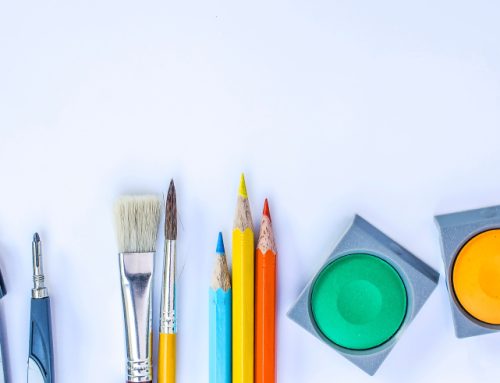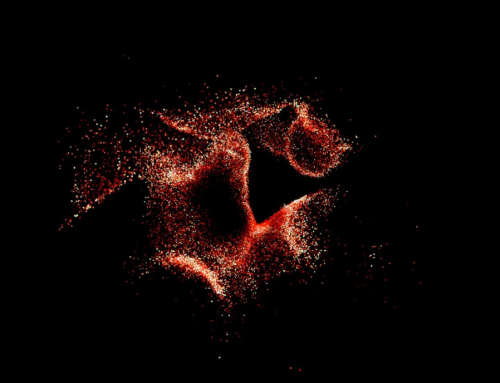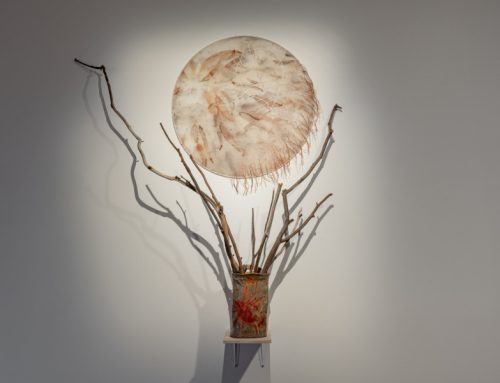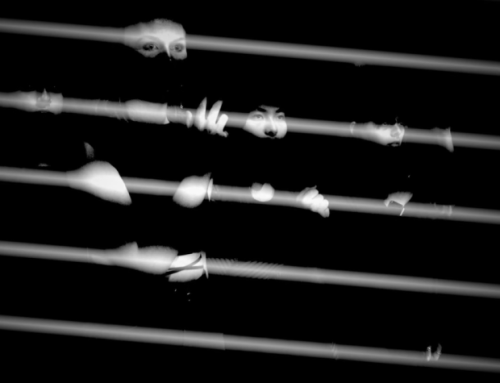St Vincent’s Hospital Sydney recently invited artist and illustrator James Gulliver Hancock to draw ‘All the Machines in the Hospital’, to help patients feel more comfortable with the technology that is part of their health journey and to demystifying hospitals and the equipment within them. Art Curator Alice McAuliffe reports.
 Many of us have experienced the anxiety felt when visiting a loved one in hospital who we find connected to a mysterious machine, or the trepidation of needing a scan or ultrasound performed in a time of ill health. Health facilities are filled with a variety of equipment from the familiar wheelchair to state of the art, one-of-a-kind diagnostic rooms that look more like a set from a Sci Fi film.
Many of us have experienced the anxiety felt when visiting a loved one in hospital who we find connected to a mysterious machine, or the trepidation of needing a scan or ultrasound performed in a time of ill health. Health facilities are filled with a variety of equipment from the familiar wheelchair to state of the art, one-of-a-kind diagnostic rooms that look more like a set from a Sci Fi film.
These pieces of technology support us in our health journey but can cause stress and confusion as we struggle to understand how they work or what they are.
To help our patients feel more comfortable with the equipment and technology that are part of their health journey, St Vincent’s Hospital Sydney invited artist and illustrator James Gulliver Hancock to draw ‘All the Machines in the Hospital’. James is a renowned illustrator who has a playful illustrative curiosity. His diverse international career includes the creation of a large scale mosaic in a train station for the MTA in New York, an interactive children’s national exhibition based on books James created with Lonely Planet, and the creation of large scale mural works in shopfront and office fit-outs for many major brands including Target, Ebay, Woolworths and Kelloggs. The St Vincent’s Hospital project plays on his personal project “All the Buildings” which started with an obsessive illustrative recording of all the buildings in New York. This project has evolved to include other major cities and various objects within them.
For ‘All the Machines in the Hospital’, staff across the hospital were asked to identify key equipment that their patients use and transport them to the makeshift artist’s studio in the hospital foyer. For those pieces that are unable to be moved, photographs were taken for the artist to draw from. As staff spoke about the equipment, key sentences and ideas, translated for a lay audience, were included in the images so people looking at the drawing can quickly understand the machine’s purpose.
The outcome is a series of drawings that capture the robotic, computerised, technological partners of our human health journey, imbuing them with personality and familiarity. These include diagnostic equipment, organ donor equipment, transfusion devices, a dental chair, the trusty wheelchair and the relatively common but no less important objects used in allied health including hand weights and a prosthetic leg.
These images will be installed in relevant areas of the hospital and also printed onto smaller sheets, available for patients in waiting rooms to colour in, take notes on or even share with family members to explain their treatment.
It’s hoped that this project will aid in demystifying hospitals and the equipment within them, so that all patients feel safe and welcome.
 Image credits
Image credits
Feature Image: James Gulliver Hancock in the temporary artist’s studio at St Vincent’s hospital.
Illustration above: An example of the illustrations produced throughout the residency.
Left: St Vincent’s anaesthetic staff look at an image of an anaesthetic ventilator.
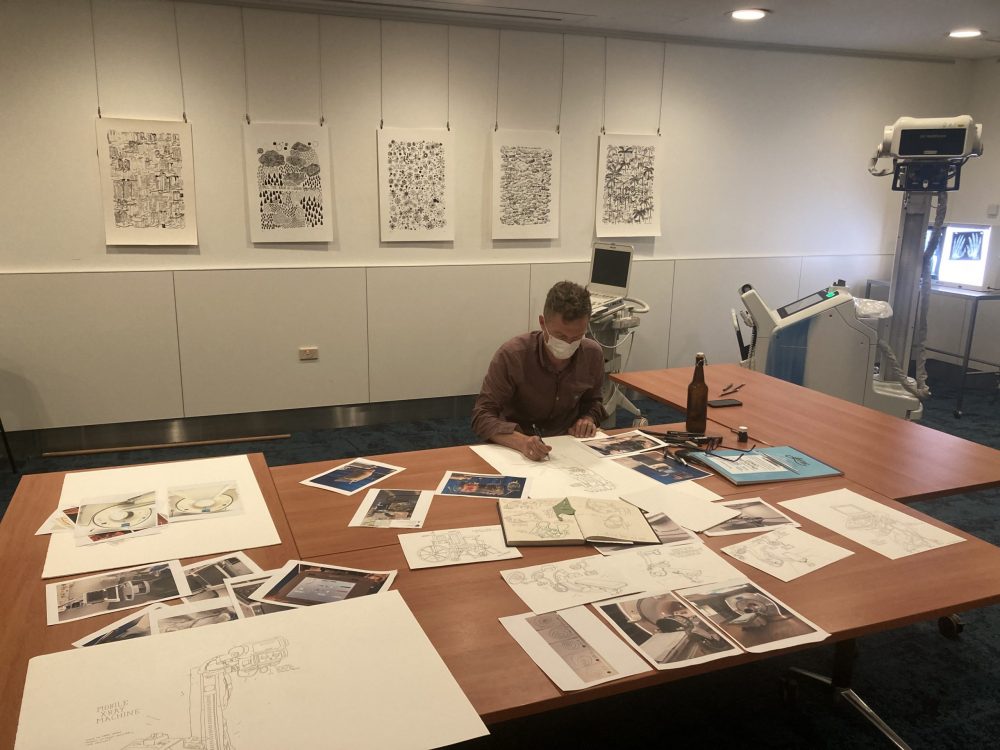
 Image credits
Image credits
